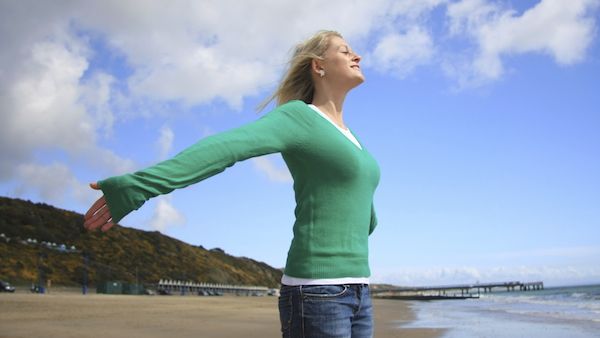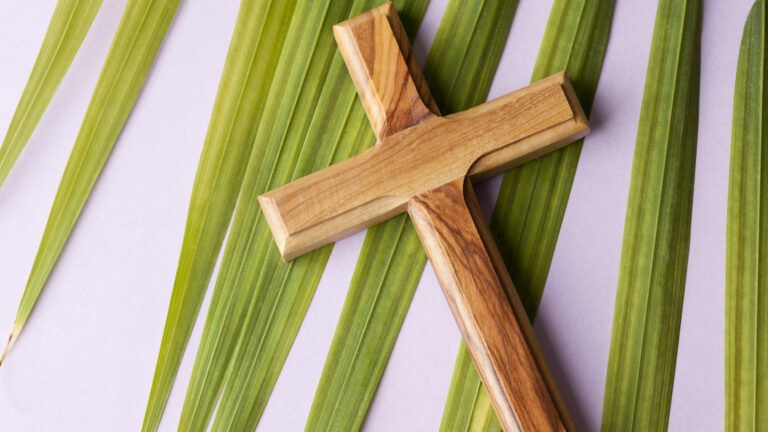I first encountered the Jewish practice of shucklen—a Yiddish word which means to shake or rock) at the Western Wall (or Kotel) in Jerusalem. Many of the worshipers who lined the ancient wall that once supported the Temple rocked back and forth as they prayed—some slowly, some frenetically.
No one knows for sure how this practice began. But one midrash suggests why it became a common practice:
A person is required to sway during prayer, as it is written: “all my bones shall proclaim: O God, who is like You!” (Psalms 35:10). . . . And this is the custom of the Rabbis of France and her pious ones.
I have heard others explain, similarly, that shucklen constitutes literal obedience to the command to “Love the Lord your God with all your heart and with all your soul and with all your strength” (Deuteronomy 6:5, NIV)—that is, with your “bodily” strength.
That is just one way to put your physical strength into your prayers. Others include:
1) Standing
Standing to pray was the most common posture for prayer in Jesus’ day. He referred to the Pharisees standing in the synagogues and on street corners to pray, condemning not their posture but their pride. He told His own disciples, “When you stand praying, if you hold anything against anyone, forgive them, so that your Father in heaven may forgive you your sins” (Mark 11:25, NIV).
2) Lifting Up Hands
Psalm 134:2 says, “Lift up your hands in the sanctuary and praise the Lord” (NIV). Lifting our hands—palms to the sky—is a physical way of reaching out to God and asking for His help. Paul urged, “In every place of worship, I want men to pray with holy hands lifted up to God” (1 Timothy 2:8, NLT).
3) Bowing
Orthodox and Roman Catholic worshipers often bow in worship (for example, bowing is the proper response to the “Gloria Patri” in liturgy); others, however, do so less often (if ever). But bowing is a great posture for worship and prayer. I tend to bow (slightly) when singing a worship song that extols God’s holiness or mentions His kingship or His throne. “Come, let us bow down in worship,” sang the psalmist (Psalm 95:6a, NIV).
4) Kneeling
Kneeling at one’s bedside or at a church altar is less common than it once was, but kneeling is a helpful posture in prayer. It reminds the person who is praying that he or she is a supplicant and a needy beggar asking for favor. “Let us kneel before the Lord our maker,” the psalmist sang, “for He is our God” (Psalm 95:6b-7a, NIV).
Ask the OurPrayer team to pray for you!
5) Lying prostrate
The Bible says that “Abram fell facedown” while talking to God (Genesis 17:3). No posture better embodies humility than lying prostrate before God, and (for me, at least) no posture better concentrates the mind and spirit. While it may more often be done in private rather than public worship, I have done both.
6) Lying supine
Those who are sick or bedridden often pray while lying on their backs. Even if that is not the only posture available to you, praying in a supine position can be beneficial. One of my favorite prayer practices is lying on my back on a hilltop or in a meadow on a fair day, with my eyes open, praying as I watch the clouds roll by.
7) Sitting
In my evening prayers, I almost always sit and journal my prayers in a notebook on my lap. You might place an empty chair next to your favorite place to sit and carry on your conversation with Jesus as if he were seated next to you. You might even pour Him a cup of coffee and start your prayers, “Good morning, Lord.”
8) Pacing
I have often found that pacing—particularly when my prayers seem urgent or numerous—helps to focus my thoughts and words a little better. The 20th century pastor, Oswald J. Smith, said his prayer practice was to clear the furniture from the center of the room and pace back and forth while praying.
Of course, God is more concerned with the position of our hearts in prayer than of our bodies. But our posture can often reflect our hearts and focus our minds, and thus lead us more quickly—and perhaps deeply—into the place where God wants to meet us.





